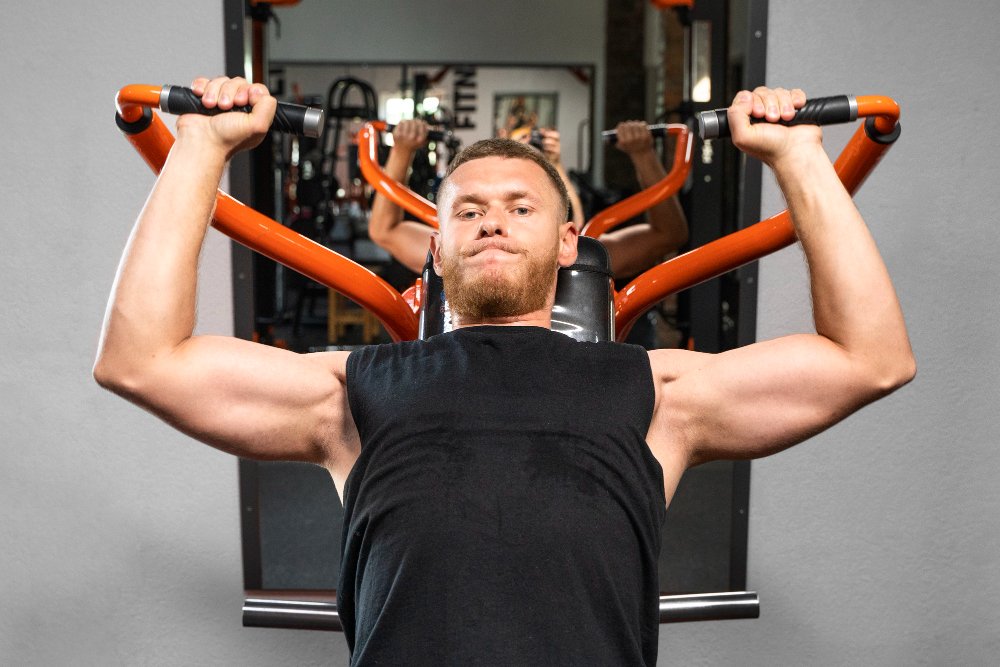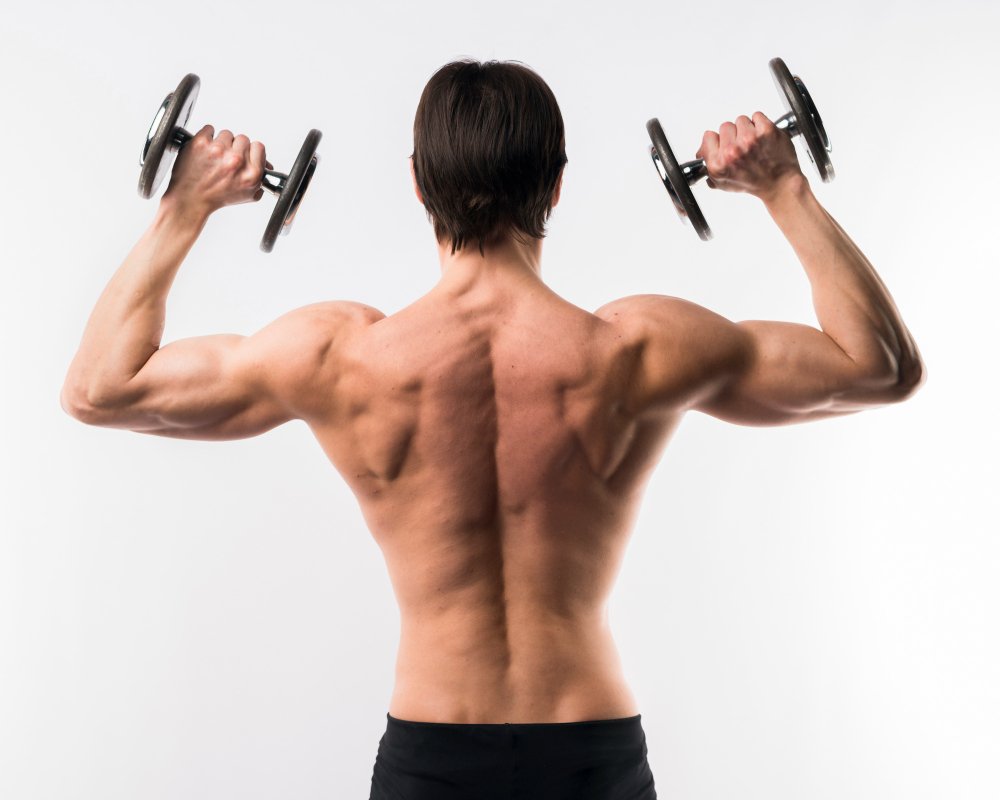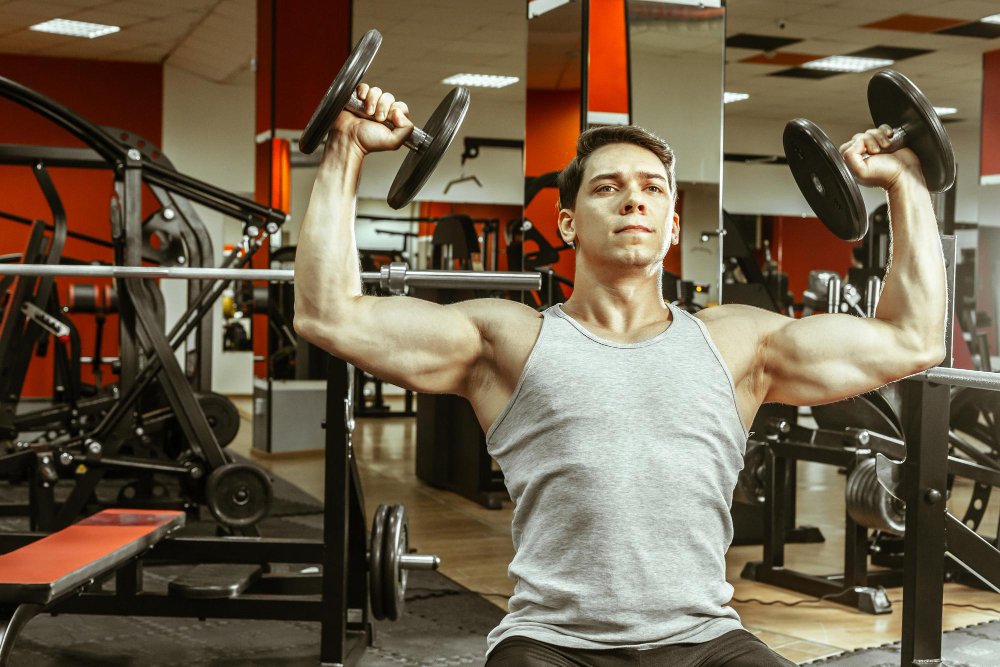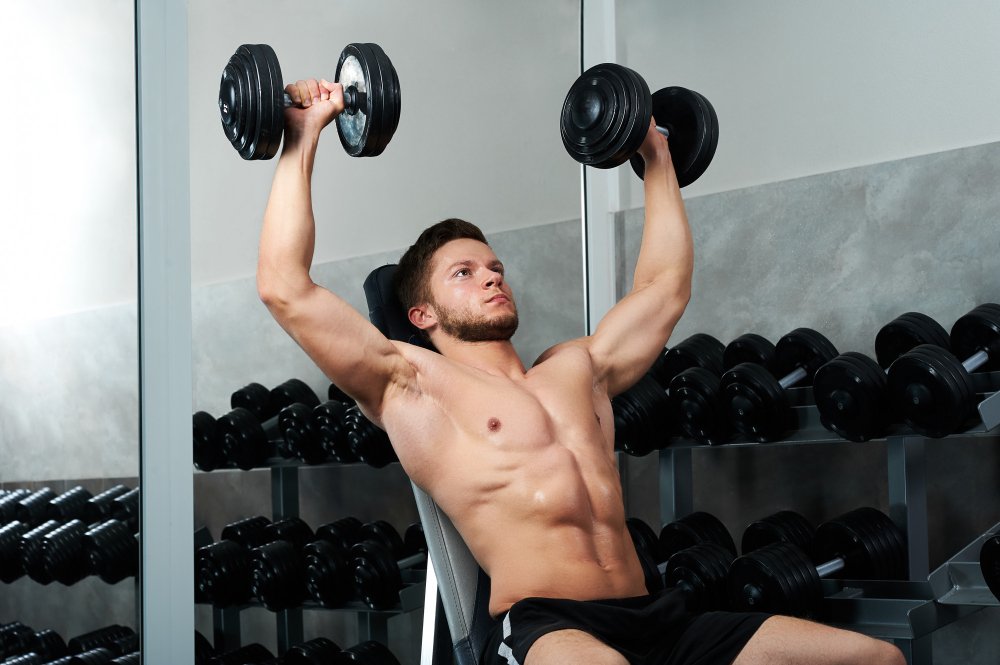Shoulder press, a fundamental exercise in any strength training routine, not only builds robust shoulders but also contributes to overall upper body strength. Understanding the muscles worked during a shoulder press is crucial for optimizing your workout routine. Let’s delve into the anatomy of the shoulder muscles and explore the nuances of this effective exercise.
Anatomy of the Shoulder Muscles

Before we dive into the specifics of the shoulder press, it’s essential to have a basic understanding of the shoulder’s intricate anatomy. The shoulder comprises several muscle groups, each with its unique functions. From the deltoids to the traps, these muscles work synergistically to facilitate a range of motions.
Primary Muscles Targeted in Shoulder Press
Deltoids: The Key Players
The deltoid muscles, often referred to as delts, are the primary movers during a shoulder press. Consisting of three distinct heads—front, side, and rear—deltoids contribute to lifting the weight overhead. Understanding how each head functions can help tailor your workout for balanced shoulder development.
Traps: Providing Stability and Support
While the trapezius muscles may not be the primary focus, they play a vital role in stabilizing the shoulder blades during a shoulder press. This added stability ensures proper form and reduces the risk of injury.
Secondary Muscles Engaged
Triceps: Assisting in the Pressing Motion
The triceps, located at the back of the arms, act as synergists in the shoulder press, aiding the deltoids in extending the arms overhead. Strengthening the triceps contributes to improved pressing power.
Serratus Anterior: Stabilizing the Shoulder Blades
The serratus anterior, often overlooked, stabilizes the shoulder blades during the shoulder press. Strengthening this muscle promotes overall shoulder stability and helps prevent shoulder injuries.
Variations of Shoulder Press Muscles Worked and Their Impact


Choosing between standing and seated shoulder press, or between dumbbells and barbells, can significantly impact muscle engagement. Let’s explore these variations and understand how they influence the effectiveness of the shoulder press.
Standing vs. Seated Shoulder Press
While standing engages more stabilizer muscles, seated shoulder press provides additional back support. Depending on your fitness goals, alternating between these variations can yield optimal results.
Dumbbell vs. Barbell Shoulder Press
Dumbbell shoulder press allows for a greater range of motion and targets each arm independently. On the other hand, barbell shoulder press enables you to lift heavier weights, promoting overall strength development.
Proper Form for Maximum Muscle Engagement
Maintaining proper form during the shoulder press is paramount to prevent injuries and ensure optimal muscle engagement. Always focus on these key points to make the most out of your shoulder press workout.
Importance of Maintaining Proper Form
Correct form ensures the targeted muscles bear the load, reducing the risk of unnecessary strain on joints and ligaments. Consistency in form also promotes muscle symmetry and balanced development.
Tips for Avoiding Common Mistakes
Avoid overarching your back, which can lead to spinal issues. Additionally, refrain from using excessive weight, as it may compromise form and increase the risk of injury. Gradual progression is key to a successful shoulder press routine.
Benefits Beyond Muscle Building
Beyond sculpting impressive shoulders, the shoulder press offers a myriad of additional benefits for your overall fitness journey.
Improved Posture
Strong shoulders contribute to better posture, reducing the likelihood of slouching. Incorporating shoulder press into your routine can lead to a more upright and confident stance.
Enhancing Shoulder Stability
The stabilizing muscles engaged during the shoulder press contribute to improved overall shoulder stability. This not only aids in other upper body exercises but also in daily activities.
Common Mistakes to Avoid
In the pursuit of shoulder gains, certain mistakes can hinder progress. Awareness of these common pitfalls is crucial for a safe and effective shoulder press routine.
Overarching the Back
Maintaining a neutral spine is essential during the shoulder press. Overarching the back can lead to lower back strain and compromise the effectiveness of the exercise.
Using Excessive Weight
Lifting heavier weights might seem tempting, but it’s essential to prioritize proper form over weight. Using excessive weight can lead to injury and hinder long-term progress.
Shoulder Press Muscles Worked in Different Fitness Routines
Inclusion in Strength Training
For those focused on building strength, incorporating shoulder press into a comprehensive strength training routine can lead to significant gains in upper body power.
Role in Bodybuilding Workouts
Bodybuilders looking to sculpt well-defined shoulders often find the shoulder press to be a cornerstone exercise. Its versatility makes it an ideal choice for targeting specific shoulder muscles.
For Muscle ups: Unlocking the Power: What Muscles Do Pull-Ups Work?
Incorporating Shoulder Press into Your Fitness Routine
Understanding how frequently to perform shoulder press and how to combine it with other exercises is crucial for a well-rounded fitness routine.
Frequency and Sets
Depending on your fitness level and goals, aim for 2-3 shoulder press sessions per week. Perform 3-4 sets with moderate to high repetitions for optimal muscle hypertrophy.
Combining with Other Exercises
For a comprehensive upper body workout, pair shoulder press with exercises targeting different muscle groups. This approach promotes overall muscle development and prevents overtraining.
Precautions and Injury Prevention
While the shoulder press is a beneficial exercise, it’s important to take precautions to prevent injuries and ensure a safe workout experience.
Warm-up Importance
Begin each shoulder press session with a thorough warm-up to prepare the muscles for the impending workload. Dynamic stretches and light cardio can help increase blood flow and reduce the risk of injury.
Signs of Overtraining
Listen to your body and be aware of signs of overtraining, such as persistent pain or discomfort. If these symptoms arise, it’s advisable to give your shoulders ample time to rest and recover.
Real-life Success Stories
Testimonials from Individuals Who Benefited
Hearing success stories from individuals who incorporated shoulder press into their fitness routines can be inspiring. Real-life testimonials highlight the transformative impact of this exercise.
Transformations Attributed to Shoulder Press
Explore stories of individuals who witnessed remarkable transformations, not just in their shoulder muscles but in their overall physical well-being. These stories showcase the versatility and effectiveness of the shoulder press.
Nutrition Tips for Shoulder Muscle Health
A well-rounded approach to fitness involves not only exercise but also proper nutrition. Consider these nutrition tips to support the health and growth of your shoulder muscles.
Protein Intake for Muscle Recovery
Protein is essential for muscle repair and growth. Ensure an adequate intake of protein-rich foods to support the recovery of your shoulder muscles post-workout.
Importance of Hydration
Staying hydrated is often overlooked but plays a crucial role in muscle function. Dehydration can lead to decreased performance and hinder muscle recovery.
Future Trends in Shoulder Press Workouts
As technology advances and fitness trends evolve, the shoulder press is likely to see innovative variations and approaches.
Technological Advancements
From smart workout equipment to virtual training programs, technology is influencing the way we approach fitness. Keep an eye out for technological advancements that may enhance the shoulder press experience.
Innovative Variations Emerging
Fitness enthusiasts are always seeking new challenges. Innovative variations of the shoulder press may emerge, offering fresh perspectives on this classic exercise.
Conclusion
In conclusion, the shoulder press stands as a versatile and effective exercise for anyone aiming to build strong and well-defined shoulders. Understanding the muscles worked and implementing proper form are crucial for a safe and successful shoulder press routine. Whether you’re a beginner or an experienced lifter, incorporating this exercise can contribute to overall upper body strength and stability.
FAQs
- How often should I do the shoulder press?
- Aim for 2-3 sessions per week, allowing sufficient time for muscle recovery.
- Can I do the shoulder press every day?
- It’s not advisable. Muscles need time to recover, so give your shoulders rest between sessions.
- What should I do if I feel shoulder pain during the press?
- Stop the exercise immediately and consult with a fitness professional or healthcare provider.
- Is it better to use dumbbells or a barbell for shoulder press?
- Both have their benefits. Dumbbells offer more range of motion, while barbells allow for heavier lifting.
- Can I replace the shoulder press with other exercises for shoulder development?
- While there are alternatives, the shoulder press remains a cornerstone exercise for optimal shoulder development.

